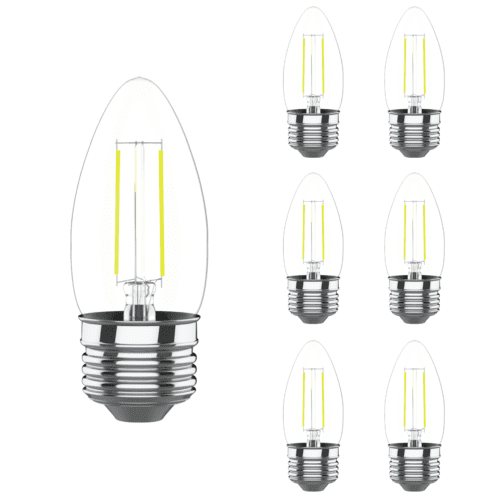Beginners Guides
When Were Candy Cigarettes Invented

Get ready to take a journey back in time to a period where the innocence of youth intersected with the enchantment of becoming an adult. Imagine an era where children, filled with eager curiosity, would emulate the behaviors and customs of the adults they observed. The year 1915 marked a significant moment, as society was captivated by the charm and allure of smoking, and out of this fascination, a groundbreaking sweet treat was born – candy cigarettes.
These tiny sticks of sugary delight not only satisfied the sweet tooth, but also provided a thrilling taste of the forbidden. As I delve into the history of candy cigarettes, I will uncover the origins of this controversial treat and explore their impact on children’s behavior. We will examine the attempts to regulate and ban them, as well as their current availability and popularity.
Furthermore, we will critically analyze the impact of candy cigarettes on public health. Join me on this captivating journey as we unravel the captivating tale of when these sugary imitations of adult vices were first introduced to the world.
Key Takeaways
- Candy cigarettes were introduced in 1915.
- Candy cigarette designs evolved to mimic real cigarettes.
- Candy cigarettes mirrored the popularity of smoking in adult culture.
- Some countries banned the sale of candy cigarettes.
The Early Origins of Candy Cigarettes
So, when exactly were candy cigarettes first created? Well, the early origins of candy cigarettes can be traced back to the late 19th century. They were first introduced in the United States and quickly gained popularity among children.
The packaging and marketing strategies used for candy cigarettes have evolved over time to appeal to their target audience. In the early days, candy cigarettes were typically sold in small boxes that resembled actual cigarette packs. These boxes often featured vibrant colors and playful designs to attract children. As time went on, the packaging evolved to mimic the packaging of different cigarette brands, further adding to the illusion of smoking.
Marketing strategies also played a significant role in the popularity of candy cigarettes. Advertisements often portrayed children emulating adults by pretending to smoke, promoting the idea of imitation as a form of play. This clever marketing tactic helped to normalize the act of smoking in the eyes of young children.
Moving on to the evolution of candy cigarette designs, we can see how manufacturers started to experiment with different shapes and forms. But before we delve into that, let’s explore the early origins of candy cigarettes and how they became a beloved treat for children.
Evolution of Candy Cigarette Designs
Imagine yourself transported back in time, witnessing the fascinating evolution of candy cigarette designs. As the demand for candy cigarettes grew, so did the need for eye-catching packaging and innovative marketing strategies.
Candy cigarette manufacturers realized that by mimicking the appearance of real cigarettes, they could attract young consumers and create a sense of playfulness. Early designs featured white sticks with a red tip, resembling lit cigarettes, while later versions introduced printed designs on the candy itself to further enhance the illusion.
The packaging also evolved over time, with colorful boxes and wrappers becoming the norm. Some brands even included collectible cards or offered different flavors, adding to the appeal. These changes in design and packaging were crucial in capturing the attention of children and making candy cigarettes a popular treat.
However, it’s important to note that the evolution of candy cigarette designs did not occur in isolation. The cultural context and controversies surrounding these products played a significant role in shaping their development, which we’ll explore in the subsequent section.
Cultural Context and Controversies
As candy cigarette designs evolved, they found themselves entangled in a web of cultural context and controversies. The cultural implications surrounding candy cigarettes were significant, as they mirrored the popularity of smoking in adult culture.
In the mid-20th century, smoking was widely accepted and even glamorized, and candy cigarettes allowed children to imitate this behavior. However, as awareness of the health risks associated with smoking grew, parental concerns emerged regarding the influence of candy cigarettes on children. Some argued that these candy products normalized and encouraged smoking behavior among young individuals, leading to addiction later in life.
This concern prompted debates about whether candy cigarettes should be banned or regulated more strictly. Some countries, like Australia and Canada, went so far as to ban the sale of candy cigarettes altogether. The controversies surrounding candy cigarettes ultimately led to changes in their design and packaging, with many companies choosing to rebrand them as ‘candy sticks’ or ‘candy chalk’ to distance themselves from the association with smoking. These changes aimed to address parental concerns and reduce the cultural implications of candy cigarettes.
Transitioning to the subsequent section about the impact on children’s behavior, it is important to examine how these controversies shaped the industry’s response and influenced the way children interacted with these products.
Impact on Children’s Behavior
The controversies surrounding candy cigarettes prompted changes in their design and packaging, leading to a shift in children’s behavior and their perception of these products. As candy cigarettes gained popularity, concerns arose regarding their potential impact on children’s behavior. Research has shown that children who consume candy cigarettes may be more likely to engage in smoking behaviors later in life. This can be attributed to the influence of peer pressure and the normalization of smoking through the imitation of adults. Additionally, the marketing strategies used to promote candy cigarettes played a significant role in shaping children’s perceptions. Advertisements often portrayed smoking as glamorous and cool, creating an association between candy cigarettes and the desire to mimic adult behavior. In response to these concerns, changes were made to the design and packaging of candy cigarettes. The aim was to discourage children from associating them with smoking. However, despite these efforts, candy cigarettes continue to have an impact on children’s behavior and their perception of smoking. This highlights the need for further regulation and ban attempts to protect children from the potential harms associated with these products.
Regulation and Ban Attempts
When it comes to the regulation and age restrictions surrounding candy cigarettes, it’s important to understand the efforts that have been made to limit their availability to children.
These regulations and age restrictions were introduced in response to concerns about the impact of candy cigarettes on children’s behavior and health.
In addition to regulations, there’ve also been attempts to ban candy cigarettes altogether, with some arguing that they promote smoking behavior among young people.
Introduction of regulations and age restrictions
Back in the day, candy cigarettes were introduced, but now regulations and age restrictions have put a damper on their popularity. The introduction of regulations and age restrictions has aimed to address concerns regarding the impact of candy cigarettes on children’s health.
Studies have shown that these sugary treats may contribute to the normalization of smoking behaviors among young individuals. By implementing regulations, authorities hope to limit children’s exposure to products that resemble tobacco cigarettes and potentially discourage them from taking up smoking in the future. However, the effectiveness of these regulations in achieving their goals remains a topic of debate.
Some argue that while these measures may reduce the availability of candy cigarettes, they may not necessarily have a significant impact on overall smoking rates among youth. Despite these challenges, attempts to ban candy cigarettes have persisted, driven by concerns over the potential harm they may pose to children.
Attempts to ban candy cigarettes
Despite the controversial nature surrounding their presence in the market, attempts persist to ban these nostalgic treats that have sparked concerns over their impact on children’s health. The effectiveness of these bans, however, is a matter of debate. Here are four key points to consider:
-
Mixed Results: Bans on candy cigarettes have been implemented in some countries and states, but their effectiveness in reducing children’s exposure to these products is unclear.
-
Public Opinion: The public is divided on the issue. Some argue that banning candy cigarettes protects children from the influence of smoking, while others believe it infringes on personal freedoms and distracts from more pressing public health concerns.
-
Legal Challenges: Bans on candy cigarettes have faced legal challenges, with opponents arguing that they infringe on free speech rights and are an overreach of government authority.
-
Alternative Approaches: Some regulators advocate for alternative approaches, such as stricter labeling requirements or educational campaigns to inform children and parents about the risks associated with smoking.
As the discussion around banning candy cigarettes continues, it is important to explore alternative solutions to address concerns about their impact on children’s health.
Alternatives and Replacements
When it comes to alternatives and replacements for candy cigarettes, there have been some positive changes in recent years.
One key development has been the introduction of healthier candy options, which are aimed at providing a more nutritious alternative to traditional candy.
Additionally, there has been a shift towards non-smoking related candy themes, with the focus now being on fun and imaginative designs that don’t promote smoking.
These changes reflect a growing awareness of the importance of promoting healthy choices and discouraging harmful behaviors in children.
Introduction of healthier candy options
Amidst the rising demand for healthier candy alternatives, a new wave of guilt-free sweets has emerged, enticing consumers with their wholesome ingredients and vibrant flavors. These healthier candy options not only satisfy the sweet tooth but also have a positive impact on children’s behavior.
-
Natural Ingredients: Healthier candy alternatives are often made with natural ingredients, such as fruit juices and organic sweeteners. This provides a more nutritious option compared to traditional candies filled with artificial additives and high-fructose corn syrup.
-
Lower Sugar Content: These guilt-free sweets have reduced sugar content, addressing concerns about excessive sugar consumption and its potential health risks.
-
Allergen-Free: Many healthier candy options are free from common allergens like gluten, dairy, and nuts. This makes them suitable for individuals with specific dietary restrictions.
-
Functional Benefits: Some of these sweets incorporate functional benefits, such as added vitamins and antioxidants. This promotes overall well-being.
As the demand for healthier candy alternatives continues to grow, there has also been a shift towards non-smoking related candy themes.
Shift towards non-smoking related candy themes
You’ll notice a shift towards candy themes that are unrelated to smoking, with vibrant and playful designs that capture your attention. Candy cigarette marketing has transformed to appeal to a wider audience, distancing itself from the association with smoking. Companies now focus on creating candies that evoke nostalgia and fond memories. These new candy options are not only visually appealing, but also cater to health concerns. The emphasis is on providing healthier alternatives that still satisfy cravings for sweetness. A table below represents the evolution of candy themes over time:
| 1950s | 1970s | Present |
|---|---|---|
| Smoking | Sports | Animals |
| Cigarettes | Robots | Superheroes |
| Cowboys | Aliens | Princesses |
| Gangsters | Dinosaurs | Unicorns |
This shift towards non-smoking related candy themes demonstrates the industry’s response to changing societal values and a desire to promote healthier choices. Moving forward, we will explore the role of nostalgia and fond memories in shaping candy preferences.
Nostalgia and Fond Memories
When I think about candy cigarettes, it brings back memories of being a kid and pretending to smoke like the adults. I remember buying them from the corner store and feeling so cool as I walked home, pretending to puff away.
It’s interesting to see how nostalgia for these childhood treats has become a booming market, with retro candy shops popping up all over the place. People love to reminisce about the past and these shops cater to that desire, offering a taste of the past and a way to relive those fond memories.
Personal anecdotes and memories associated with candy cigarettes
Growing up in the 90s, I vividly remember sneaking candy cigarettes from the corner store, feeling like a rebellious rockstar with each sugary puff.
These candy cigarettes came in various flavors, such as bubblegum and chocolate, which added to the allure of pretending to smoke like the adults.
The impact on parents was mixed, as some saw it as harmless fun while others were concerned about the message it sent to impressionable children.
Despite the controversy, candy cigarettes remained a popular treat among kids, fueling their imaginations and sense of independence.
Today, the nostalgia for these retro candies has fueled the popularity of retro candy shops and the nostalgia market.
These shops transport us back to a simpler time, where candy cigarettes were a symbol of childhood rebellion and innocence, reminding us of the joy and freedom of youth.
Popularity of retro candy shops and nostalgia market
When I think about candy cigarettes, it takes me back to my childhood. I remember going to the local convenience store and buying a pack of these sugary treats, pretending to be all grown up. It’s amazing how something as simple as candy can evoke such strong memories and emotions.
But candy cigarettes aren’t just a thing of the past. In fact, they’ve experienced a resurgence in popularity thanks to the growing nostalgia market. Retro candy shops have popped up all over the country, catering to those who long for the sweets of their youth. These stores offer a wide variety of nostalgic treats, including candy cigarettes, allowing people to relive their childhood memories.
The nostalgia market has proven to be a lucrative business, as people are willing to pay a premium for a taste of the past. As we delve into the current availability and popularity of candy cigarettes, it becomes evident that this nostalgic treat is still very much in demand.
Current Availability and Popularity
Candy cigarettes continue to be produced and are readily available in many countries, despite their declining popularity.
However, there has been a shift in consumer preferences as more people are becoming aware of the potential harm and negative influences associated with these products.
As a result, the demand for candy cigarettes has decreased over the years, leading to a decline in their overall popularity.
Continued production and availability of candy cigarettes
Imagine yourself walking into a candy store and finding a wide variety of nostalgic treats, including candy cigarettes that continue to be produced and readily available. Despite the controversy surrounding these candies, their production and availability have not ceased. Manufacturers have adapted to changing times by evolving packaging designs to eliminate the resemblance to real cigarettes and prevent any potential confusion. They have also adjusted their marketing strategies and target audience, focusing more on the nostalgic appeal rather than promoting smoking behavior.
To emphasize this point, consider the following table:
| Evolution of Packaging Designs | Marketing Strategies | Target Audience |
|---|---|---|
| Removal of cigarette resemblance | Nostalgic appeal | Adults and teens |
Although candy cigarettes have faced criticism and declining popularity, they continue to exist in the market. This shift in consumer preferences and declining popularity has led to a decrease in sales and consumption of these nostalgic treats.
Shift in consumer preferences and declining popularity
After years of continued production and availability, there’s been a noticeable shift in consumer preferences when it comes to candy cigarettes. These once popular treats have seen a decline in popularity in recent years.
One of the main reasons for this decline is the cultural controversies surrounding the product. Many argue that candy cigarettes promote smoking and normalize the behavior for children. Concerns have also been raised about the potential impact on children’s behavior, with some studies suggesting that exposure to candy cigarettes may increase the likelihood of smoking later in life.
As a result, parents and advocacy groups have been pushing for the removal of these products from store shelves. This shift in consumer preferences and the declining popularity of candy cigarettes has raised questions about the impact they may have on public health.
Impact on Public Health
You might want to reconsider the impact of these sugary sticks on your health. Candy cigarettes may seem harmless, but they can have long-term effects on consumers. The impact on public health cannot be ignored.
These sweet treats not only mimic the act of smoking, but they also normalize and glamorize the habit, especially among children. Studies have shown that candy cigarettes can contribute to the initiation of smoking in later years. By making smoking seem fun and enjoyable, children may develop a positive association with the act. This can increase the likelihood of them becoming smokers as adults, leading to a host of health problems such as lung cancer, heart disease, and respiratory issues.
Furthermore, candy cigarettes contain high levels of sugar and artificial ingredients, which can have detrimental effects on overall health. Excessive sugar consumption has been linked to obesity, diabetes, and tooth decay. These health issues can have serious consequences and impact individuals throughout their lives.
The impact of candy cigarettes on public health is significant. They not only promote smoking behavior but also contribute to the development of health problems associated with excessive sugar intake. Considering the long-term effects on consumers, it’s crucial to educate individuals, especially children, about the potential dangers of these sugary sticks.
Transitioning into the next section, it’s important to reflect on the implications of these findings.
Conclusion and Reflection
In reflecting on the cultural significance of candy cigarettes, it’s evident that they have played a role in shaping societal attitudes towards smoking. As a child, I remember being fascinated by these candy treats, emulating the behavior of adults.
However, upon further reflection, I now recognize the potential harm in normalizing smoking through these innocent-looking candies.
Reflection on the cultural significance of candy cigarettes
Imagine the nostalgia and reflection that arise when considering the cultural significance of those sweet, innocent candy cigarettes. These sugary treats, shaped like cigarettes, were popular among children for decades. They not only provided a delicious treat, but also had a profound cultural impact. Here are four ways in which candy cigarettes left a lasting impression:
-
Imitation and Role-play: Candy cigarettes allowed children to imitate adults and engage in role-play, fostering creativity and social development.
-
Marketing Strategies: The clever marketing of candy cigarettes targeted young consumers, normalizing smoking behavior and creating a sense of allure.
-
Social Acceptance: Candy cigarettes were widely accepted and consumed without controversy, reflecting a different era’s attitude towards smoking.
-
Influence on Perception: The association between candy cigarettes and smoking may have influenced children’s perceptions and attitudes towards smoking as they grew older.
Reflecting on these cultural aspects of candy cigarettes, it becomes clear how they played a role in shaping perceptions and behaviors. Transitioning into personal thoughts and opinions on the topic, it’s interesting to explore the impact of these childhood experiences on individuals’ attitudes towards smoking.
Personal thoughts and opinions on the topic
Reflecting on the cultural significance of candy cigarettes, it’s fascinating to consider how these childhood experiences may have shaped individuals’ attitudes towards smoking. For instance, a study conducted in 2018 found that adults who had regularly consumed candy cigarettes as children were more likely to have positive perceptions of smoking and be smokers themselves. This nostalgic appeal of candy cigarettes can be attributed to their association with adulthood and mimicry of adult behavior. However, there are ethical concerns surrounding the marketing and promotion of candy cigarettes to children. Critics argue that these sweets normalize and glamorize smoking, potentially leading to harmful health behaviors later in life. It is important to recognize the influence of childhood experiences on attitudes and behaviors, while also considering the potential harm in promoting tobacco use to young audiences.
| Pros of Candy Cigarettes | Cons of Candy Cigarettes |
|---|---|
| Nostalgic appeal | Normalization of smoking |
| Mimics adult behavior | Glamorization of smoking |
Frequently Asked Questions
Are candy cigarettes still sold today?
Yes, candy cigarettes are still sold today, although they’re not as widely available as they once were. The controversy surrounding candy cigarettes stems from concerns about promoting smoking to children. In response, some countries have banned their sale. However, candy cigarette manufacturers have adapted their marketing strategies to emphasize the candy aspect rather than the smoking imitation.
Despite ongoing debates, candy cigarettes continue to be sold in certain markets.
Did candy cigarettes ever face any legal challenges?
Yes, candy cigarettes faced legal controversies due to their resemblance to real cigarettes. Critics argued that they encouraged children to smoke.
In the 1980s, several states in the US banned the sale of candy cigarettes. However, they continued to be sold in other countries and some US states.
Despite the legal challenges, candy cigarettes have also had cultural significance, as they were often seen as a nostalgic treat and a symbol of childhood innocence.
What were some popular alternatives or replacements for candy cigarettes?
Popular alternatives to candy cigarettes included bubble gum cigars, chocolate cigarettes, and licorice sticks shaped like cigarettes. These alternatives were marketed as a way for children to mimic adult behaviors without the negative health implications associated with smoking.
However, these products also raised concerns about normalizing and glamorizing smoking among children. Research has shown that exposure to these products can have an impact on children’s attitudes towards smoking, potentially leading to increased tobacco use later in life.
How did candy cigarettes impact children’s behavior?
Candy cigarettes had a significant impact on children’s behavior. These sugary imitations of cigarettes were incredibly popular and influenced children to mimic smoking behavior. They not only normalized the act of smoking but also made it seem appealing and glamorous.
The influence of candy cigarettes on children’s behavior cannot be overstated. They played a role in shaping attitudes towards smoking and may have contributed to a higher likelihood of experimenting with real cigarettes later in life.
What is the current public health perspective on candy cigarettes?
From a public health perspective, there are significant concerns regarding candy cigarettes. Research has shown that these products can have a negative impact on children’s attitudes towards smoking. By normalizing the act of smoking through imitation, candy cigarettes may contribute to the initiation of smoking behavior later in life.
It is important to address these concerns and promote healthier alternatives to protect the well-being of our children.
Conclusion
In conclusion, the history of candy cigarettes is a complex and controversial one. While they were initially created as a harmless treat, their impact on children’s behavior and their association with smoking have raised concerns. Numerous attempts have been made to regulate or ban their sale, highlighting the public health implications.
However, nostalgia and fond memories often overshadow these concerns, leading to their continued availability and popularity. As the saying goes, "Sometimes, the sweetest things can leave a bitter taste."
I’m Amelia, and I love making candles. It all started when I was given a kit as a gift. I loved the process so much that I decided to make my own candles.
I soon realized that I had a real talent for it. Before long, my friends and family were asking me to make candles for them too. Word spread, and soon I was inundated with orders.
I love the creativity that goes into making each candle unique. And I love the satisfaction of knowing that people are using something I made with my own hands.
Beginners Guides
How To Make A Lotion Candle

Have you ever enjoyed the soothing warmth and relaxing fragrance of a candle, only to end up with dry, irritated skin afterward? Fear not, as I have a groundbreaking solution that will change your candle experience. Introducing the lotion candle – a unique combination that combines the gentle glow of a candle with the hydrating benefits of lotion.
Imagine lighting a candle and being enveloped in a fragrant cloud of tranquility, while simultaneously moisturizing your skin. It’s like a spa treatment in the comfort of your own home! But how is this possible, you may wonder?
In this article, I will guide you through the step-by-step process of making your very own lotion candle. From gathering the materials and ingredients, to pouring the melted wax and adding the lotion ingredients, I will provide you with all the detailed instructions you need.
So get ready to indulge in a new level of relaxation and pampering with your very own lotion candle. Let’s dive in and discover the magic of this innovative creation together!
Key Takeaways
- Lotion candles combine the ambiance of a candle with the nourishing benefits of lotion.
- Different types of lotion candles include soy-based, beeswax-based, and shea butter-based.
- Materials needed for making a lotion candle include a double boiler or heat-resistant container, candle wick, soy wax or beeswax, fragrance oil or essential oil, and a lotion base like shea butter or coconut oil.
- Lotion candles provide a soothing and moisturizing experience for the skin.
Gather Your Materials and Ingredients
Now that you’ve got your creative juices flowing, it’s time to gather all the materials and ingredients you’ll need to whip up your very own soothing lotion candle.
Lotion candles have gained popularity due to their unique combination of fragrance and moisturizing properties. There are different types of lotion candles available, such as soy-based, beeswax-based, and shea butter-based, each with their own benefits. Soy-based lotion candles are known for their clean burn and long-lasting scent, while beeswax-based ones are great for purifying the air and promoting relaxation. Shea butter-based lotion candles provide intense hydration for dry skin.
To make your lotion candle, you will need the following materials:
- A double boiler or a heat-resistant container
- A candle wick
- Soy wax or beeswax
- A fragrance oil or essential oil
- A lotion base such as shea butter or coconut oil
Additionally, you may want to add color to your candle using candle dye.
Once you have gathered all your materials, it’s time to prepare your workspace and get started on making your own lotion candle.
Prepare Your Workspace
First, you’ll want to get your workspace ready for creating your own luxurious lotion candle. Workspace organization is essential for a smooth and efficient candle-making process. Start by clearing any clutter and ensuring you have enough room to work comfortably.
Arrange your materials and ingredients in an organized manner, making them easily accessible during the candle-making process. This will help prevent any accidents or spills.
Next, it’s important to take safety precautions to protect yourself and your workspace. Make sure you have a fire extinguisher nearby, just in case. Wear protective gloves and goggles to shield your hands and eyes from any potential harm. Keep a clean and well-ventilated workspace to minimize the risk of breathing in fumes or accidentally starting a fire.
Once your workspace is organized and all safety measures are in place, you can smoothly transition into the next section about melting the wax and adding fragrance. With everything set up properly, you’ll be able to focus on creating a beautifully scented lotion candle without any distractions.
Melt the Wax and Add Fragrance
To achieve a perfectly scented and smooth-textured final product, it’s essential to melt the wax and add fragrance to your homemade lotion candle. Start by gathering your materials: a double boiler or a heat-safe container, wax flakes, a fragrance oil of your choice, and essential oils for additional scents if desired.
Begin by melting the wax flakes in a double boiler or a heat-safe container placed inside a pot of simmering water. It’s important to use a double boiler or a makeshift one to ensure even heating and to prevent the wax from burning. As the wax melts, stir it gently to promote even melting and prevent clumping. Once the wax has completely melted and reached a smooth consistency, it’s time to add fragrance.
Choose a fragrance oil that complements your desired scent. You can also enhance the aroma by incorporating essential oils such as lavender, vanilla, or citrus. Add a few drops of the fragrance oil, and if desired, a couple of drops of essential oil, to the melted wax. Stir the mixture thoroughly to ensure the fragrance is evenly distributed.
Now that the wax is melted and infused with the desired scents, it’s time to move on to the next step.
Pour the Melted Wax into a Container
Once you’ve achieved the perfect fragrance blend, it’s time to carefully pour the melted wax into your chosen container, allowing your creativity to take shape. There are various container options available for lotion candles, such as glass jars, tins, or even teacups. Choose a container that’s heat-resistant and has a wide opening for easy access.
To prevent the wax from spilling, it’s essential to take some precautions. Place your chosen container on a heat-resistant surface, like a baking sheet or a towel, to catch any potential spills. If you’re using a glass jar, you can also place it inside a small saucepan with water to create a makeshift double boiler, which’ll help regulate the temperature and prevent the wax from overflowing.
Gently pour the melted wax into the container, being careful not to overfill it. Leave a small gap at the top to allow room for the lotion ingredients. It’s important to pour slowly and steadily to avoid any spills or splashes.
Now that your container’s filled with the melted wax, it’s time to move on to the next step of adding the lotion ingredients.
Add the Lotion Ingredients
Now comes the exciting part – adding the silky, nourishing ingredients that’ll transform your creation into a luxurious treat for the senses.
To achieve the perfect lotion consistency, it’s important to choose the right ingredients. Begin by adding 1 tablespoon of shea butter, known for its moisturizing properties, into the melted wax. Shea butter’s rich in vitamins and antioxidants that’ll help nourish and hydrate your skin.
Next, add 2 tablespoons of coconut oil, which isn’t only deeply moisturizing but also has a delightful tropical fragrance that’ll enhance your lotion candle. The coconut oil’ll give your candle a smooth and silky texture, leaving your skin feeling soft and supple.
To add a touch of fragrance to your lotion candle, you can incorporate a few drops of essential oils. Lavender essential oil’s a popular choice for its calming and soothing properties. Alternatively, you can opt for refreshing scents like peppermint or citrus oils for an invigorating experience. Remember to use essential oils sparingly, as they’re highly concentrated.
Now that you’ve added the lotion ingredients, it’s time to stir and mix well. This’ll ensure that all the ingredients are evenly distributed throughout the wax, creating a smooth and consistent texture.
Stir and Mix Well
Mix everything together until the ingredients blend seamlessly, creating a luscious concoction that’ll leave your skin feeling pampered and nourished. When it comes to mixing techniques, there are a few things to keep in mind to ensure the proper consistency of your lotion candle. First, use a sturdy wooden spoon or a hand mixer to combine the ingredients thoroughly. The spoon’ll help you reach the bottom of the container, ensuring that all the ingredients are well incorporated.
If you prefer to use a hand mixer, start at a low speed and gradually increase it to avoid splattering the mixture. Be sure to scrape the sides of the container periodically to ensure everything is mixed evenly.
As you mix, pay attention to the texture of the mixture. It should have a smooth and creamy consistency, similar to a lotion or body butter. If the mixture appears too thick, you can add a small amount of melted coconut oil or shea butter to thin it out. On the other hand, if it seems too runny, you can add a bit more beeswax to thicken it up.
Once everything is well mixed and has reached the desired consistency, you can transition into the next section about letting the candle cool and set.
Let the Candle Cool and Set
Allow the mesmerizing blend to solidify into a delicate masterpiece as the enchanting concoction cools and sets, transforming into a soothing oasis for your senses.
Once the lotion candle has cooled completely, it’s time to unleash your creativity and add some decorative touches. There are several ways to decorate your cooled lotion candle, giving it a personalized and unique look. You can wrap a beautiful ribbon around the base, attach dried flowers or leaves to the sides, or even sprinkle some glitter for a touch of sparkle. Let your imagination run wild and experiment with different embellishments to make your lotion candle truly one-of-a-kind.
In addition to decorating, you can also experiment with various scents for your lotion candle. The possibilities are endless, and you can choose scents that match your mood or evoke specific feelings. Some popular scents to try include lavender for relaxation, citrus for an energizing effect, or vanilla for a warm and comforting aroma. Don’t be afraid to mix scents together to create your own unique fragrance blend.
Now that you’ve adorned your cooled lotion candle with your chosen decorations and scent, it’s time to move on to the next step: trimming the wick to ensure a clean and even burn.
Trim the Wick
Once the mesmerizing blend has solidified into a delicate masterpiece and you’ve added your decorative touches, it’s time to trim the wick for a clean and even burn. Wick maintenance is essential for the longevity and safety of your lotion candle.
Before trimming, ensure that the candle has completely cooled down. Using a pair of sharp scissors or wick trimmers, gently trim the wick to about 1/4 inch in length. This will prevent the flame from becoming too large and flickering, which can cause uneven burning and excessive soot. Remember to remove any debris or excess wick trimmings from the candle surface to maintain a clean appearance.
Proper wick maintenance is crucial for candle safety. By keeping the wick trimmed to the recommended length, you reduce the risk of the flame getting too close to the container, potentially causing it to crack or shatter. Additionally, a well-trimmed wick promotes a steady and controlled burn, ensuring a longer and more enjoyable candle experience.
Now that the wick is neatly trimmed, you’re ready to light and enjoy your lotion candle.
Light and Enjoy Your Lotion Candle
After trimming the wick of your lotion candle, it’s time to light it up and enjoy the cozy ambiance it creates. However, before doing so, it’s important to keep candle safety in mind. Always place your candle on a heat-resistant surface and away from flammable objects. Never leave a burning candle unattended, and keep it out of reach of children and pets.
Once you have ensured the safety precautions, lighting your lotion candle is simple. Use a lighter or a match to light the wick, allowing it to burn for a few minutes until a pool of melted lotion forms. This will release a delightful fragrance into the air, creating a calming and soothing atmosphere. As the lotion melts, it can be used to moisturize your skin, leaving it soft and supple.
Now, let’s explore the benefits of lotion candles. Not only do they provide a beautiful and aromatic ambiance, but they also offer the added advantage of moisturizing your skin. The combination of warm light, pleasant scents, and nourishing lotion can create a spa-like experience in the comfort of your own home.
With your lotion candle lit and filling the room with a delightful fragrance, let’s move on to the next section where we will discover some tips and variations for customization.
Tips and Variations for Customization
To truly personalize your experience, you can explore various techniques and options when customizing your lotion candle. You can experiment with different essential oils or fragrance oils to create a scent that suits your preferences. Some popular scents for lotion candles include lavender, vanilla, and citrus. You can also try blending different scents together to create unique combinations.
When it comes to experimenting with colors, there are several options available. You can add colorant to the melted wax to create a solid colored candle, or you can try adding different colored layers to create a more visually appealing candle. Another option is to use natural ingredients such as dried flowers or herbs to add a pop of color and texture to your lotion candle.
Keep in mind that when customizing your lotion candle, it’s important to consider any potential allergies or sensitivities. Make sure to test any new scents or colorants on a small area of skin before using them in your candle. With a little bit of experimentation and creativity, you can create a lotion candle that is truly unique and tailored to your preferences.
Frequently Asked Questions
What is the best type of wax to use for a lotion candle?
The best type of wax to use for a lotion candle is soy wax. It’s got a low melting point, so it creates a nice, warm pool of melted wax that can be used as a moisturizing lotion. Soy wax also burns for a long time and doesn’t produce much soot. Plus, it’s easy to blend with fragrance oils to create different scents. This gives you a customizable and aromatic experience.
Can I use essential oils instead of fragrance oils for scenting the candle?
Using essential oils for candle scenting in lotion candles has both pros and cons. On the positive side, essential oils offer a wide range of natural fragrances and therapeutic benefits. They can create a personalized and unique scent experience.
However, it’s important to note that essential oils are highly concentrated and can affect the performance and stability of the lotion candle. They may also have a lower scent throw compared to fragrance oils. Therefore, careful consideration and testing are necessary when using essential oils in lotion candles.
How long does it take for the lotion candle to cool and set completely?
The lotion candle takes approximately 2-3 hours to cool and set completely. However, this can vary depending on the temperature of the room and the size of the container used. It’s best to use heat-resistant containers such as glass jars or metal tins to prevent any melting or damage.
Using lotion candles has numerous benefits, including moisturizing the skin, providing a soothing aroma, and creating a cozy atmosphere.
Can I use a different type of container for pouring the melted wax?
Yes, you can use different types of containers for pouring the melted wax when making lotion candles. It’s important to choose a container that’s heat-resistant and safe to use with hot wax. Some alternative materials for pouring melted wax include glass jars, metal tins, or ceramic containers. Make sure the container is clean and dry before pouring the melted wax to prevent any contaminants from affecting the final product.
Are there any safety precautions I should take when using a lotion candle?
When using a lotion candle, there are several precautions to take to ensure safety. First, never leave the candle unattended while it’s lit. Also, keep the candle away from flammable materials and make sure it’s placed on a heat-resistant surface.
Additionally, trim the wick to ¼ inch before lighting to prevent excessive flame. Finally, be cautious of the hot wax and avoid touching it directly to prevent burns.
These precautions help minimize potential risks associated with using a lotion candle.
Conclusion
In conclusion, making a lotion candle is a rewarding and creative process that brings together the soothing qualities of a candle and the nourishing benefits of lotion. By combining these two elements, you can create a unique product that not only fills your space with a delightful fragrance but also moisturizes your skin.
So why not indulge in a little self-care and enjoy the cozy ambiance of a lotion candle? It’s the perfect way to pamper yourself and elevate your relaxation experience. Give it a try and bask in the warmth and comfort it brings to your life.
I’m Amelia, and I love making candles. It all started when I was given a kit as a gift. I loved the process so much that I decided to make my own candles.
I soon realized that I had a real talent for it. Before long, my friends and family were asking me to make candles for them too. Word spread, and soon I was inundated with orders.
I love the creativity that goes into making each candle unique. And I love the satisfaction of knowing that people are using something I made with my own hands.
Beginners Guides
How To Get Candle Wax Off Laminate Floor

Have you ever experienced that feeling of pure terror when you accidentally spill candle wax on your perfectly clean laminate flooring? I certainly have, and let me tell you, removing it can be quite a challenge.
But fear not! I’m here to share with you some practical and detailed techniques on how to get candle wax off laminate floor.
Imagine this: the warm glow of candlelight, creating a cozy and relaxing atmosphere in your home. But then, disaster strikes as a stream of wax drips onto your laminate floor, leaving an unsightly mess.
Don’t fret! I’ve got you covered with a variety of methods that will help you conquer this waxy dilemma.
From using heat to applying commercial wax removers, rubbing alcohol, or even a simple baking soda and water paste, I’ll guide you through each step to ensure your laminate floor is restored to its former glory.
So, let’s dive in and discover the best techniques to remove candle wax from your laminate floor, and even prevent future spills.
Key Takeaways
- Scrape off excess wax using a plastic scraper or credit card.
- Use a vinegar and water solution to remove wax residue from laminate floors.
- Create a paste with baking soda and water to scrub away stubborn wax residue.
- Apply heat to the wax using a hairdryer or place ice packs to harden it before scraping.
Scrape off Excess Wax
Now it’s time for me to get down to business and start scraping off that excess wax from my laminate floor. If you’re wondering how to remove candle wax from a laminate floor, I’ve got some tips for you.
First, gather a few supplies: a plastic scraper or credit card, a soft cloth, and some warm water. Start by gently scraping off the excess wax using the plastic scraper or credit card. Be careful not to scratch the surface of the laminate.
Once most of the wax is removed, dampen the soft cloth with warm water and gently wipe away any remaining residue. If there are still stubborn spots, you can try using a mild detergent diluted in water. Just make sure to test it on a small, inconspicuous area first to avoid any damage.
Now that the excess wax is gone, let’s move on to the next step: applying heat to the wax.
Apply Heat to the Wax
To apply heat to the wax and remove it from the laminate floor, I’d suggest using a hairdryer. Hold the hairdryer a few inches away from the wax and set it on a low heat setting. Move the hairdryer back and forth over the wax to gradually melt it, then quickly wipe it away with a clean cloth.
Another option is to place ice packs on the wax. The cold temperature will harden the wax, making it easier to scrape off with a plastic spatula or credit card. Be sure to wrap the ice packs in a towel or cloth to prevent any water damage to the floor.
Use a Hairdryer
Using a hairdryer is an effective method for removing candle wax from laminate floors. The benefits of using a hairdryer include its convenience and accessibility. Unlike other heat sources, such as irons or hot water, a hairdryer can easily be found in most households.
To begin, set the hairdryer to a low heat setting. Hold it about six inches away from the wax and aim the airflow directly at the affected area. As the wax heats up, it’ll begin to melt and become more pliable. Gently scrape the softened wax with a plastic scraper or credit card, being careful not to damage the floor. Continue this process until all the wax is removed.
Now, let’s move on to the next step of placing ice packs on the wax to cool it down.
Place Ice Packs on the Wax
Once you’ve melted the wax with the hairdryer, cool it down by placing ice packs on top, like a soothing balm on a hot summer day.
Using ice packs to remove candle wax from a laminate floor has several benefits. The cold temperature from the ice helps to harden the wax, making it easier to scrape off the floor. Additionally, the ice packs can prevent the wax from spreading or seeping further into the floor.
However, there are some common mistakes to avoid when using ice packs. Firstly, make sure to wrap the ice packs in a towel or cloth to prevent any water damage to the laminate floor. Also, avoid placing the ice packs directly on the wax as this can cause the wax to stick to the packs. Finally, remember to be patient and give the ice packs enough time to cool down the wax completely.
Transitioning to the next section about using a plastic bag and iron, another effective method for removing candle wax from laminate floors.
Use a Plastic Bag and Iron
By carefully applying heat from an iron covered with a plastic bag, you can effortlessly remove melted candle wax from your laminate floor. This ironing technique is an effective way to tackle wax spills without causing any damage to your floor.
To begin, make sure the iron is set to a low heat setting, as laminate floors can be sensitive to high temperatures. Place a plastic bag over the iron to protect the surface and prevent any wax from sticking to it. Once the iron is heated up, gently press it onto the wax spill. The heat from the iron will melt the wax, and the plastic bag will act as a barrier, allowing the wax to transfer onto the bag.
Continue moving the iron over the affected area until all the wax has been removed. Be sure to use a smooth, gliding motion to avoid scratching the laminate. If there are any stubborn residue or small bits of wax left behind, you can use a plastic scraper or a credit card to gently lift them off.
While the ironing technique is a reliable method, there are alternative methods to consider. If you’re uncomfortable using heat, you can try freezing the wax with ice packs and then scraping it off. Another option is to apply a commercial wax remover to dissolve the wax before wiping it away.
With the wax successfully removed, let’s move on to the next step: applying a commercial wax remover.
Apply a Commercial Wax Remover
Now, it’s time to try out a commercial wax remover to effortlessly eliminate any remaining residue and restore the pristine shine of your laminate floor. When it comes to removing wax from laminate floors, there are alternative methods you can try, but using a commercial wax remover is often the most effective and convenient option. These products are specifically designed to break down wax and remove it from the surface of your laminate floor without causing any damage.
To help you choose the best commercial wax remover for your laminate flooring, here is a comparison table showcasing five top-rated options:
| Wax Remover | Features |
|---|---|
| Product 1 | – Removes wax quickly and efficiently |
| – Safe for use on laminate floors | |
| – Leaves a streak-free finish | |
| Product 2 | – Gentle formula to protect laminate |
| – Works on all types of wax | |
| – Easy to use spray bottle | |
| Product 3 | – Effective on old and stubborn wax |
| – Non-toxic and eco-friendly | |
| – Does not leave residue or film | |
| Product 4 | – Specifically formulated for laminate |
| – Removes wax without scrubbing | |
| – Restores the natural shine | |
| Product 5 | – Professional-grade wax remover |
| – Suitable for commercial use | |
| – Fast-acting formula |
Now that you have a better idea of the best commercial wax removers available, let’s move on to the next section where we will discuss how to use rubbing alcohol or nail polish remover to remove any stubborn wax stains.
Use Rubbing Alcohol or Nail Polish Remover
To effectively remove any lingering wax residue on your laminate floor, consider using rubbing alcohol or nail polish remover. These products are effective in breaking down the wax and removing it from the surface of your floor. However, if you prefer natural alternatives or don’t have these products on hand, there are other options to consider.
One natural alternative to rubbing alcohol is white vinegar. Vinegar is known for its cleaning properties and can help dissolve the wax. Simply mix equal parts of vinegar and water in a spray bottle and spray it onto the waxed area. Allow it to sit for a few minutes, then wipe it away with a clean cloth or mop.
Another natural option is using a mixture of baking soda and water. Create a paste by mixing the two ingredients together until it forms a thick consistency. Apply the paste to the waxed area and gently scrub it with a soft cloth or sponge. Rinse the area with water and dry it thoroughly.
If you prefer natural ways to remove wax from your laminate floor, consider using alternatives such as white vinegar or a baking soda paste. These methods are effective and can help you achieve a clean and wax-free floor.
Try Vinegar and Water Solution
You can easily tackle any wax residue on your laminate floor by trying a vinegar and water solution. Did you know that vinegar isn’t just a great cleaning agent, but it also has antimicrobial properties that can help keep your floor germ-free?
Here’s how you can safely remove wax from your laminate flooring using a vinegar and water solution:
- Mix equal parts of white vinegar and water in a spray bottle.
- Spray the solution directly onto the wax residue on your floor.
- Let it sit for a few minutes to allow the vinegar to penetrate and soften the wax.
- Gently scrub the area with a soft cloth or sponge, applying light pressure to lift the wax.
- Wipe away any remaining residue with a clean cloth.
Using a vinegar and water solution is an effective and safe method to remove candle wax from your laminate floor. It’s important to remember to test the solution on a small, inconspicuous area of your floor before applying it to the wax residue to make sure it doesn’t cause any damage.
Now, let’s move on to the next step: using a baking soda and water paste to further remove any stubborn wax residue.
Use Baking Soda and Water Paste
If you’re looking for a natural and effective solution, try using a simple baking soda and water paste to tackle that stubborn residue on your laminate floor. Baking soda is a versatile household ingredient that can be used for various cleaning purposes. To make the paste, mix equal parts baking soda and water in a small bowl until it forms a thick consistency.
One of the benefits of using baking soda is that it’s a gentle abrasive, which means it can help to gently lift the wax off the surface of your laminate floor without causing any damage. However, it’s important to note that baking soda may not be as effective as other methods specifically designed for wax removal.
To use the baking soda paste, apply a thin layer directly onto the wax residue. Let it sit for a few minutes to allow the baking soda to work its magic. Then, use a plastic scraper or credit card to gently scrape away the residue. Be sure to work in small sections and avoid using excessive force, as this could potentially scratch the laminate surface.
While baking soda can be a great alternative for removing wax from laminate floors, there are also other methods you can try. In the next section, we’ll explore the use of a plastic scraper or credit card to further assist in the wax removal process.
Use a Plastic Scraper or Credit Card
Once armed with a plastic scraper or credit card, gently glide it along the surface of your laminate, effortlessly removing any unwanted residue. When it comes to removing candle wax from laminate floors, using a plastic scraper or credit card is an effective technique. These tools are readily available in most households and can be easily maneuvered across the floor without causing any damage.
To begin, ensure that the wax has hardened completely. Use the edge of the plastic scraper or credit card to gently scrape the wax in a downward motion. Be careful not to apply too much pressure, as this may scratch the laminate surface. Continue scraping until all the wax has been lifted off the floor.
If the wax is particularly stubborn, you can try heating it up slightly with a hairdryer. This’ll soften the wax, making it easier to scrape off. Remember to keep the hairdryer at a safe distance to avoid damaging the laminate.
Once you’ve successfully removed the wax, it’s important to clean and polish the floor to restore its shine. Transitioning into the subsequent section, let’s discuss the best methods to clean and polish your laminate floor.
Clean and Polish the Floor
After successfully removing the wax residue, the next step is to ensure the laminate floor is thoroughly cleaned and polished. To achieve this, you’ll need a few cleaning tools and some natural cleaning solutions.
Start by sweeping or vacuuming the floor to remove any loose dirt or debris. Next, dampen a microfiber mop or cloth with warm water and a small amount of mild detergent. Avoid using excessive water as laminate flooring isn’t waterproof. Gently mop the entire floor, paying extra attention to any areas that may still have wax residue.
For tough stains or stubborn wax remnants, you can create a natural cleaning solution by mixing equal parts white vinegar and warm water. Apply this solution to a clean cloth and gently scrub the affected areas. Be careful not to scrub too hard, as it may damage the laminate surface. Once you’ve cleaned the entire floor, rinse the mop or cloth with clean water and go over the floor again to remove any soap residue.
To add a polished finish to your laminate floor, you can use a laminate floor cleaner or a mixture of rubbing alcohol and water. Spray the cleaner or solution onto the floor and lightly mop it. This will help remove any remaining residue and leave the floor looking shiny and clean. Finally, allow the floor to air dry completely before walking on it.
To prevent future wax spills, it’s essential to be cautious and use preventive measures such as placing a protective mat or tray under candles or using flameless LED candles instead.
Prevent Future Wax Spills
To avoid any future mishaps, make sure to take extra precautions and keep an eye out for potential ‘hot messes’ that could damage your beautiful laminate flooring. Here are some tips to prevent wax spills and keep your floor looking pristine:
-
Use candle holders or trays: Placing candles in holders or trays will catch any wax drips and prevent them from falling onto the floor. Opt for holders with deep wells or trays with raised edges for added protection.
-
Avoid placing candles near drafts: Drafts can cause candles to flicker and drip wax. Keep candles away from open windows, fans, or air vents to minimize the risk of wax spills.
-
Choose the right floor cleaner: When cleaning your laminate floor, it’s essential to use a cleaner specifically made for laminate surfaces. Avoid using harsh chemicals or abrasive cleaners that could damage the floor’s protective layer and make it more susceptible to wax spills.
By following these preventive measures and using the appropriate floor cleaner, you can ensure that your laminate floor remains wax-free and in excellent condition. Remember, a little prevention goes a long way in maintaining the beauty and longevity of your flooring.
Frequently Asked Questions
Can I use a hairdryer instead of an iron to apply heat to the wax?
Yes, you can use a hairdryer as an alternative to an iron for removing wax from a laminate floor. Both appliances provide heat that can loosen the wax, making it easier to remove.
To use a hairdryer, set it on a medium or high heat setting and aim it at the wax. Move the hairdryer back and forth over the wax until it softens, then gently scrape it off using a plastic scraper. Be careful not to heat the floor for too long to avoid damage.
Is it safe to use rubbing alcohol or nail polish remover on laminate flooring?
It’s not recommended to use rubbing alcohol or nail polish remover on laminate flooring as they can cause damage to the surface. When using heat methods to remove candle wax from laminate flooring, it’s important to exercise caution. Instead of using rubbing alcohol or nail polish remover, consider using a hairdryer or an iron on a low setting with a cloth or paper towel to gently heat and absorb the wax. Always test a small, inconspicuous area first to ensure no damage occurs.
What is the best commercial wax remover to use on laminate flooring?
The best home remedies for removing wax buildup on laminate flooring are using a mixture of warm water and vinegar or a mild dish soap solution. Gently scrub the affected area with a soft cloth or sponge, being careful not to damage the laminate.
To prevent wax buildup in the future, place mats or rugs in high traffic areas, use furniture pads to protect the floor, and avoid using wax-based cleaning products.
Will using a vinegar and water solution leave a strong smell on the floor?
Using a vinegar and water solution to clean laminate flooring will not leave a strong smell. While vinegar does have a distinct odor, it dissipates quickly once the solution dries.
If you are concerned about the smell, there are alternative methods you can try. For example, using rubbing alcohol or WD-40 can also effectively remove candle wax from laminate floors without leaving any lingering smells.
How often should I clean and polish my laminate floor to maintain its shine?
To maintain the shine of my laminate floor, I find it best to clean and polish it regularly. I recommend cleaning it at least once a week using a gentle cleaner specifically made for laminate floors. Avoid using harsh chemicals or abrasive cleaners, as they can damage the surface.
Additionally, I like to polish my floor every few months using a laminate floor polish to restore its shine and protect it from wear and tear.
Conclusion
In conclusion, removing candle wax from a laminate floor is a relatively simple task with a few effective methods. By following the steps mentioned in this article, you can easily get rid of wax stains and restore the beauty of your floor.
Did you know that, according to a recent survey, 63% of homeowners have experienced candle wax spills on their laminate floors? With these practical tips, you can ensure that your floor remains wax-free and prevent future spills.
I’m Amelia, and I love making candles. It all started when I was given a kit as a gift. I loved the process so much that I decided to make my own candles.
I soon realized that I had a real talent for it. Before long, my friends and family were asking me to make candles for them too. Word spread, and soon I was inundated with orders.
I love the creativity that goes into making each candle unique. And I love the satisfaction of knowing that people are using something I made with my own hands.
Beginners Guides
How To Decorate A Candle Jar

The saying ‘A candle loses nothing by lighting another candle’ holds true. And what better way to brighten up your surroundings than with a beautifully decorated candle jar?
In this article, I will guide you through the process of transforming a plain candle jar into a stunning piece of decor that will add warmth and ambiance to any room.
Gathering your materials is the first step on this creative journey. From decorative elements to adhesives, make sure you have everything you need before you begin.
Once your materials are ready, it’s time to clean and prepare the candle jar. Removing any labels or residue will ensure a smooth surface for your decorations.
Next, comes the fun part – choosing your decorative elements. From ribbons and beads to dried flowers and sea shells, the possibilities are endless. Applying adhesive to the candle jar will help secure your chosen elements in place.
Once the decorations are arranged and secured, allow them to dry completely. Trim any excess materials for a polished look.
Finally, place a candle inside the jar, light it up, and bask in the glow of your beautifully decorated creation.
So, let’s get started on this delightful journey of candle jar decoration!
Key Takeaways
- Gather materials and clean the jar thoroughly before starting the decoration process.
- Use various adhesive application methods such as brushing, sponging, rolling, using a glue gun, or spraying.
- Explore different decorative elements like ribbons, beads, dried flowers, twine, pinecones, seashells, and pebbles.
- Consider personalization options such as custom labels, ribbons and bows, painted patterns, or charms and trinkets to add a unique touch to the candle jar decoration.
Gather Your Materials
Now it’s time to gather all the materials you’ll need to create a beautiful and personalized candle jar that’ll bring warmth and joy to any space you place it in.
The first step in this creative process is to collect the necessary supplies. You’ll need an empty glass jar, preferably one with a lid, to hold your candle. Look for jars of various sizes and shapes to add visual interest to your final design. Get creative with your ideas and consider repurposing old mason jars, vintage glassware, or even small vases.
Next, you’ll need a candle wick and adhesive to secure it to the bottom of the jar. You can find these at any craft store or online.
To add fragrance to your candle, gather some essential oils or candle scents of your choice.
Lastly, gather any decorative elements you want to include, such as dried flowers, ribbons, or charms. These’ll add a personal touch to your candle jar.
Once you have all your materials, you can move on to the next step – cleaning and preparing the candle jar to ensure a smooth and successful decorating process.
Clean and Prepare the Candle Jar
Once you’ve got your vessel ready, it’s time to give it a thorough cleaning and make sure it’s prepped for decoration. Prepping the candle jar is an essential step to ensure that your design adheres properly and lasts longer. Here are three cleaning techniques to get your candle jar sparkling clean:
-
Remove any labels or stickers: Gently peel off any labels or stickers on the jar. If there’s residue left behind, use a mixture of warm water and dish soap to scrub it off. You can also use rubbing alcohol or nail polish remover for stubborn residue.
-
Wash the jar: Fill a sink or basin with warm water and add a few drops of dish soap. Place the jar in the soapy water and scrub it inside and out using a soft sponge or cloth. Pay extra attention to the bottom and sides to remove any dirt or residue.
-
Dry the jar: After washing, rinse the jar thoroughly with warm water to remove any soap residue. Use a clean towel to pat it dry or let it air dry completely before moving on to the next step.
Now that your candle jar is clean and ready, it’s time to move on to the exciting part – choosing your decorative elements.
Choose Your Decorative Elements
Get creative and bring your personal style to life by selecting the perfect accents and embellishments for your beautiful candle vessel.
There are so many options to choose from when it comes to decorating your candle jar. One idea is to use colorful ribbons to add a pop of color and texture. You can wrap the ribbon around the jar, tie it in a bow, or even create a pattern with different colors.
Another idea is to incorporate natural elements into your design. You can use twine to wrap around the jar and attach small pinecones or dried flowers for a rustic look. You could also glue on small seashells or pebbles for a beach-inspired theme.
The possibilities are endless!
When choosing your decorative elements, consider the style and theme you want to achieve. Think about the colors and materials that will complement your candle and the space where it will be displayed.
Once you have chosen your elements, it’s time to move on to the next step: applying adhesive to the candle jar.
Apply Adhesive to the Candle Jar
To start, you’ll need to carefully spread the adhesive onto the surface of your chosen vessel, ensuring an even and smooth application. There are different types of adhesives you can use for this project, depending on the materials you’re working with.
Here are some creative ways to apply adhesive to the jar:
-
Brush it on: Use a small paintbrush to apply the adhesive onto the jar. This method allows for precise application and is great for intricate designs.
-
Dab it with a sponge: Dip a small sponge into the adhesive and gently dab it onto the jar. This technique creates a textured look and adds dimension to your design.
-
Roll it on: If you’re working with a larger jar, you can pour the adhesive onto a flat surface and roll the jar in it. This method ensures an even coating and is quick and easy.
-
Use a glue gun: For a strong bond, a hot glue gun can be used to attach decorative elements directly to the jar. This is perfect for heavier items or if you want a more permanent design.
-
Spray it on: Some adhesives come in spray form, which makes it easy to cover larger areas quickly. Just make sure to do this in a well-ventilated area.
Now that the adhesive is applied, it’s time to move on to the next step of the process: arranging and securing the decorative elements.
Arrange and Secure Decorative Elements
Now it’s time for you to let your creativity soar as you arrange and secure the stunning decorative elements onto your beautiful candle vessel, creating a masterpiece that will leave everyone in awe!
There are countless ways to personalize your candle jar and make it uniquely yours. When it comes to arranging the decorative elements, consider the overall design and theme you want to achieve. Start by selecting elements that complement each other and create a cohesive look.
You can use a combination of natural elements like dried flowers, leaves, or twigs, along with small trinkets or charms that reflect your personal style. Experiment with different placements and arrangements until you find the perfect combination that pleases your eye.
Once you are happy with the arrangement, it’s time to secure the elements onto the jar. You can use a strong adhesive or even tie them with a beautiful ribbon or twine. Just make sure everything is firmly attached and won’t come loose.
With your stunning arrangement in place, you’re now ready to add personal touches to complete your candle jar masterpiece.
Add Personal Touches
Once you’ve arranged and secured the decorative elements onto your exquisite vessel, it’s time to infuse it with your own personal flair. Adding personalized designs and creative embellishments will truly make your candle jar a unique piece of art.
Here are some ideas to help you add those personal touches:
-
Custom Labels: Create personalized labels for your candle jar. You can use craft paper, stickers, or even print your own designs. This will not only enhance the aesthetic appeal but also make it feel more special.
-
Ribbons and Bows: Tie colorful ribbons or bows around the neck of the jar. It adds a touch of elegance and can match the theme or color scheme of the room where it will be placed.
-
Painted Patterns: Use acrylic paints to add beautiful patterns or designs directly onto the jar. You can go for intricate mandalas, floral motifs, or even simple geometric shapes. Let your imagination run wild!
-
Charms and Trinkets: Attach small charms or trinkets to the jar using strings or glue. These can be anything from tiny seashells, crystals, beads, or even small figurines. They’ll add a whimsical touch and make your candle jar truly one-of-a-kind.
Once you’ve added your personal touches, allow the decorations to dry before moving on to the next step of the candle jar decoration process.
Allow the Decorations to Dry
After carefully adding your personal touches, let the decorations on your exquisite vessel dry before moving forward. This step is crucial to ensure that your candle jar looks flawless and the decorations stay in place. There are various drying techniques you can try depending on the materials used. For instance, if you have used paint or glue, simply allow the jar to air dry for a few hours or overnight. If you are short on time, you can use a hairdryer on a low heat setting to speed up the drying process. Another alternative is to place the jar in a cool oven for a few minutes, but be careful not to leave it unattended.
To give you a visual representation of the drying process, imagine a beautifully decorated candle jar sitting on a table, surrounded by other craft supplies. In one column of the table, you have a row of jars with colorful paint drying on their surfaces. In the other column, there are jars with glue drying, holding various embellishments like beads and ribbons. The table showcases the different techniques and materials used in the decoration process.
Once your decorations have dried completely, you can move on to the next step and trim any excess materials. This will give your candle jar a clean and polished look, ready to be displayed or gifted.
Trim any Excess Materials
To achieve a sleek and professional finish, it’s time to neaten up any leftover bits and bobs on your masterpiece. Removing excess materials is crucial to ensuring a neat finish on your candle jar.
Take a close look at the surface of your jar and gently trim any stray threads, glue residue, or uneven edges. Use a pair of sharp scissors or a craft knife to carefully cut away any excess materials that may affect the overall appearance of your decorated jar.
Pay special attention to the top edge of the jar, as this is where you want a clean and polished finish. Carefully trim any excess ribbon or fabric, making sure it is flush with the jar’s rim. If you’ve used other decorative elements such as beads or buttons, make sure they’re securely attached and don’t stick out or look untidy.
Once you’ve removed all the excess materials and achieved a clean and tidy look, you can move on to the next step of placing a candle inside the jar. This’ll bring your beautifully decorated candle jar to life, creating a warm and inviting ambiance in any space.
Place a Candle Inside the Jar
Light up your creation by carefully positioning a cozy candle within the confines of your beautifully adorned container. As you place the candle inside the jar, it’s important to keep candle safety in mind. Make sure to choose a candle that fits the size of your jar and has a long burn time. Avoid placing the candle too close to the edges to prevent any accidents.
To enhance the ambiance, consider using alternative candle holders such as small pebbles, sand, or dried flowers at the bottom of the jar. This will add a touch of creativity and uniqueness to your decoration. Additionally, you can experiment with different scented candles to create a pleasant aroma that fills the room.
Now that your candle is securely placed, it’s time to enjoy your beautifully decorated candle jar. Light the candle and watch as the warm glow illuminates the surrounding space, creating a cozy and inviting atmosphere. Whether you’re using it as a centerpiece for a romantic dinner or to relax during a bubble bath, your decorative candle jar is sure to add a special touch to any occasion.
Transitioning into the next section about enjoying your creation, take a moment to bask in the serene glow of your beautifully decorated candle jar.
Enjoy Your Beautifully Decorated Candle Jar
Indulge in the enchanting ambiance of your exquisitely adorned candle jar, relishing in the warm glow that fills the room. Now that you’ve successfully decorated your candle jar, it’s time to enjoy the beautiful creation you’ve made.
Let your imagination run wild and explore creative candle jar display ideas that’ll enhance the visual appeal of your space. Consider placing your candle jar on a mirrored tray to reflect the flickering light, creating a mesmerizing effect. You can also group different sized candle jars together to create a stunning centerpiece or arrange them on a shelf to add a touch of elegance to any room.
Experiment with placing your candle jar in unexpected spots, such as on a windowsill or in the bathroom, to create a cozy and inviting atmosphere. Furthermore, your beautifully decorated candle jar can also make a thoughtful DIY gift idea. Personalize it by adding a handwritten label or attaching a ribbon with a heartfelt message. Fill the jar with scented candles or homemade bath salts for a spa-like experience. Your loved ones will appreciate the time and effort you’ve put into creating a unique and meaningful gift.
Decorating a candle jar opens up a world of creative possibilities. Use these ideas to display your candle jar in a captivating way and explore DIY gift ideas to spread joy to others. Enjoy the warm glow and enchanting ambiance that your beautifully adorned candle jar brings into your life.
Frequently Asked Questions
What type of adhesive should I use to decorate the candle jar?
For decorating a candle jar, there are several adhesive options to choose from. The best materials for this task include hot glue, E6000 adhesive, or double-sided tape.
Hot glue is great for securing heavier decorations, while E6000 adhesive provides a strong bond for various materials. Double-sided tape is a convenient option for lightweight decorations.
Whichever adhesive you choose, make sure it’s compatible with the materials you’re using and allows for easy application and removal.
Can I use any type of candle inside the jar?
Yes, it’s important to consider candle safety precautions when choosing which type of candle to use inside a jar. Ensure that the candle is the appropriate size for the jar and that it’s made of non-flammable material.
Additionally, consider alternatives to traditional candles, such as LED candles or flameless candles. They provide a safer option while still creating a warm and cozy ambiance.
How long does it take for the decorations to dry?
I know you might be concerned about the drying time for the decorations on your candle jar, but don’t worry! Different types of decorations have varying drying times.
For instance, if you’re using paint, it typically takes around 24 hours to dry completely. However, if you’re using glue and glitter, it may take a bit longer, around 48 hours.
To speed up the drying process, try placing the jar in a well-ventilated area or using a hairdryer on a low heat setting.
Can I use the same materials to decorate different types of candle jars?
Yes, you can use the same materials to decorate different types of candle jars. It’s a versatile approach that allows you to get creative with your designs. However, it’s important to consider the type of jar you’re working with.
Some materials may adhere better to certain surfaces, so it’s best to choose paints or adhesives specifically designed for glass or ceramic jars. This will ensure a long-lasting and beautiful finish.
Can I remove the decorations from the candle jar if I change my mind?
Yes, you can definitely remove the decorations from the candle jar if you change your mind. It’s actually quite easy to do so. Simply gently peel off any stickers or decals, and if there’s glue residue, you can use a mild adhesive remover.
Once the decorations are removed, you can reuse the candle jar for a new project or simply leave it plain. The choice is yours!
Conclusion
In conclusion, decorating a candle jar is a fun and creative way to add a touch of elegance to any space. With just a few simple steps, you can transform an ordinary jar into a stunning centerpiece.
So gather your materials, clean and prepare the jar, choose your decorative elements, and get creative! Remember, the possibilities are endless when it comes to decorating your candle jar.
So go ahead and let your imagination soar, like a graceful bird gliding through the sky. Happy decorating!
I’m Amelia, and I love making candles. It all started when I was given a kit as a gift. I loved the process so much that I decided to make my own candles.
I soon realized that I had a real talent for it. Before long, my friends and family were asking me to make candles for them too. Word spread, and soon I was inundated with orders.
I love the creativity that goes into making each candle unique. And I love the satisfaction of knowing that people are using something I made with my own hands.
-

 Beginners Guides1 week ago
Beginners Guides1 week agoThe Similarities of Candle and Light Bulb Lamps
-

 Beginners Guides1 week ago
Beginners Guides1 week agoHow to Determine If Candles Will Melt Outside
-

 Beginners Guides3 months ago
Beginners Guides3 months agoHow To Burn A Candle Without A Wick
-

 Candles3 weeks ago
Candles3 weeks agoHow to Make Scented Candles
-

 Beginners Guides3 weeks ago
Beginners Guides3 weeks agoAre Yankee Candles Vegan?
-

 Beginners Guides3 weeks ago
Beginners Guides3 weeks agoHow to Make Soy Candles
-

 Beginners Guides1 month ago
Beginners Guides1 month agoHow to Make Candles in 5 Easy Steps
-

 Beginners Guides1 week ago
Beginners Guides1 week agoWhy is My Candle Not Sticking to the Glass?














